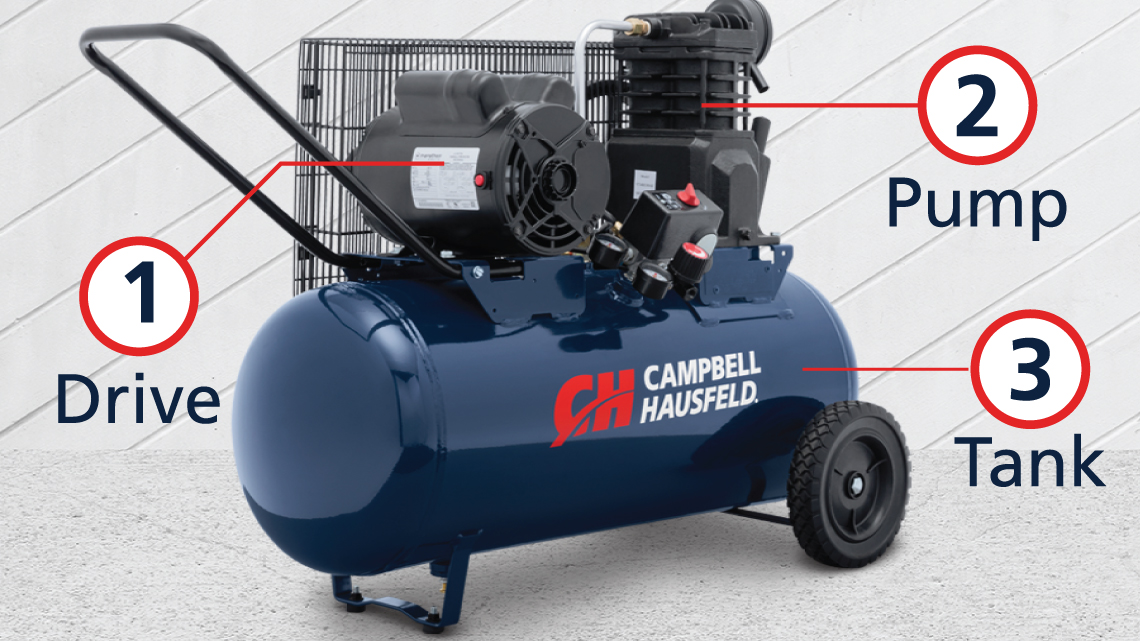
You probably use an air compressor for all types of jobs — from powering tools such as nail guns and paint sprayers to filling up tires. But are you familiar with the basics of how an air compressor works? Understanding how air compressors work can help you determine the right compressor for your jobs and how to effectively maintain your compressor. Air compressors are relatively simple machines that have three main components:
- Drive, which can be a gas engine or electric motor, provides the power to propel the compressor pump.
- Pump, which uses the energy from the drive to draw in atmospheric air and compress it to elevated pressure. This compressed air is then sent through a discharge tube into a storage tank for use later.
- Storage tank, which is equipped with a one-way valve called a check valve that keeps compressed air from applying back pressure on the pump. The air storage tank acts as an air flow buffer, eliminating the need to run the compressor continuously, resulting in less pump wear and motor damage from overheating.
The air inside the tank is stored at a higher pressure than the air in the room (or atmosphere), and it wants to return to the outside pressure. When the regulator is opened, air escapes. This compressed air can be harnessed to perform work such as powering tools, spraying paint or operating a pneumatic device.
The atmospheric air that is drawn into the tank contains water molecules, which do not stay suspended in the air when under increased pressure at room temperature. As a result, these water molecules condense in the storage tank. To deal with this moisture, each tank is outfitted with a drain valve located at the bottom of the tank. This allows users to drain trapped moisture, maintain tank volume and prevent tank corrosion.
In addition, every air compressor has a pressure switch that automatically starts the unit when the air pressure in the tank is below the rated cut-in, or “on” pressure, and stops the compressor when the tank pressure reaches the cut-out or “off” pressure. The tank pressure gauge measures the air pressure inside the tank.
When the compressor turns off, an unloader valve releases the pressurized air in the discharge tube. This allows the pump to start without having to overcome the resistance the trapped air would cause. In the unlikely event, the pressure switch should fail to shut off the compressor, a built-in safety valve is there to release the excess pressure.
The safety valve and pressure switch on an air compressor are factory set for safe operation and should not be readjusted.
On portable air compressors, a regulator is provided and allows the user to control the outlet pressure of the air flowing into the tool. Most air tools require delivered air pressure of either 40 psi or 90 psi for proper operation. The regulated air pressure is displayed on the outlet pressure gauge that is attached to the regulator and should be set dynamically while operating the tool.
Learn more about Campbell Hausfeld air compressors to find a compressor that’s right for you.

